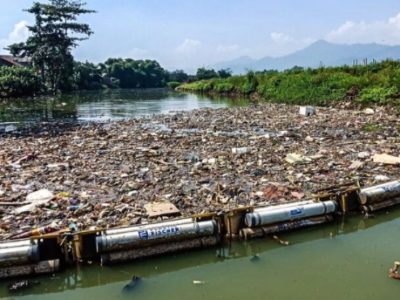Stopping the flow of plastics into our oceans has become a pressing global concern. On March 3, 2022, 175 countries signed a mandate in the United Nations Environment Assembly to develop a legally binding treaty to stop plastic pollution.
Negotiators worldwide have been working on the international treaty for more than two years, intending to complete the agreement before the end of the year.
At the same time, more than 200 companies and financial institutions have banded together in the Business Coalition for a Global Plastics Treaty to show their support. The Coalition’s key objectives for the treaty include policies that:
-
Reduce the use of fossil fuel-derived virgin plastics and short-lived plastics that can’t practically be recycled.
-
Establish design-for-recycling practices and require producers to fund after-use collection and treatment.
-
Create local incentives to promote recycling and address existing pollution.
Plastic Fischer, a German start-up, has devised an innovative solution to tackle the problem of existing plastic pollution in rivers. Their approach is to prevent and clean up the approximately 8 million tons of plastics that enter the ocean through rivers each year. The company states that 80% of ocean plastic comes through rivers.
Plastic Fischer makes Trash Booms from locally available materials so local workers can build, repair, and operate them. Using cheap, locally available materials reduces the environmental impact and cost of shipping materials to the site. In addition, they often use materials that would otherwise be wasted. For example, in Indonesia’s Citarum River, they used plastic drums that once held textile chemicals.
The booms reach from shore to shore across a river, trapping the plastic waste as it flows, making removal efficient. Once collected, it is recycled or incinerated with energy recovery to supplement fossil fuel. Working primarily in Developing Nations, the company even provides open-sourced directions on how to make your TrashBoom.
Initially, the company’s business model was to earn a profit by selling recyclables collected from river waste. However, after 18 months of operations, the company found that most of the collected waste was not recyclable.
So, they changed their business model and now sell corporate credits promising measurable and verifiable results. For example, companies can finance operations per ton of collection or sponsor the installation of a new boom co-branded with the company’s logo.









I really wanted to thank you for this excellent and educational article you are presenting at this website. My extensive internet investigation has at the end of the day been recognized with awesome facts to talk about with my friends. I feel lucky to have come across the website and look forward to spend more excellent reading time here. Thanks a lot once again for all the details. Reply from All Shops Business Directory user.
Thanks for the information provided! I’m captivated by the articles and couldn’t stop reading. I’m blown away! ID : 3838473760